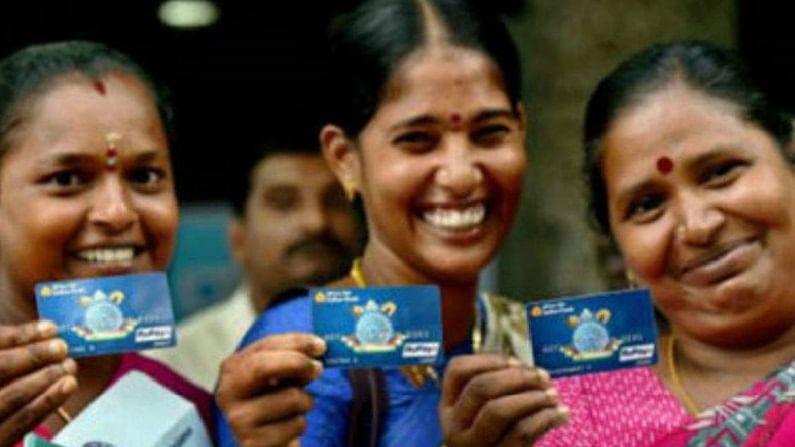Consider these 9 things before investing in mutual funds!
What is the right way to invest in mutual funds? How do mutual funds work? What kind of risk is involved? Which fund is right for whom? What things should be kept in mind before investing? Watch this video to know-

There has been an addition to the Jan Dhan beneficiaries in April, the month ravaged by the second wave of Covid-19, though the cumulative deposits in these accounts have dipped during the month, government data shows.
The number of Jan Dhan beneficiaries that stood at 4,220 lakh at the end of FY21 rose to 4,231 lakh at the end of April, resulting in an addition of 11 lakh individuals.
April also witnessed a resultant dip in the average deposit in these accounts and the share of beneficiaries who were issued debit cards.
6 lakh debit cards
As many as 6 lakh debit cards were issued to these new beneficiaries in April.
However, the cumulative deposits in these accounts went down from Rs 145,550 crore on March 31 to Rs 143,297 crore at the end of April. The net outflow from these accounts during April amounted to Rs 2,253 crore.
Average deposit
The average deposit in Jan-Dhan accounts fell from Rs 3,449 at the end of FY21 to Rs 3,386.85 at the end of April.
Analysing the Jan-Dhan data till March 31, 2021, it was found that the union territory of Lakshadweep topped the country on average deposits.
The average deposit per beneficiary in this scenic island stood at Rs 18,684, which was 5.4 times of the all-India average of Rs 3,449.
Manipur at the bottom
Manipur had the lowest deposit per beneficiary at Rs 2,037 at the end of FY21.
Last year the second and third places in the list of average deposits were occupied by the Union Territory of Ladakh and the state of Goa. While the average deposit in Ladakh is Rs 10,931 (3.16 times the national average) that in Goa is Rs 6,899 (twice the country’s average).
According to the data till March 31, 2021, while there were 12 states below the all-India average deposit amount of Rs 3449, as many as 22 are above it.
Fall in debit card/account
Till the end of FY21, 30.9 crore debit cards were issued to 42.2 crore Jan Dhan beneficiaries. Therefore, on average, 73.22% of the beneficiaries had debit cards that allow them to operate ATMs and even do online purchases.
At the end of April, the percentage of Jan-Dhan beneficiaries who have debit cards fell to 73.17%.
At the end of FY21 about 90% of the beneficiaries of Jan-Dhan accounts in Ladakh had debit cards while only 35.14% had it in Manipur. At the bottom of the states was Mizoram where only 35.14% accounts holders were given a debit card.
Since August 2014
Launched in August 2014 targeting the bottom of the financial pyramid, the Pradhan Mantri Jan Dhan accounts was a quantum leap in the direction of financial inclusion. From an account for every family, the new target is opening a bank account for each adult.
These accounts can be opened in public sector banks, regional rural banks, and private sector banks.
One of the most important immediate collateral benefits was the establishment of a system where direct cash transfers reached the intended targets without any leakage.
Empowering women was another crucial objective of the programme.